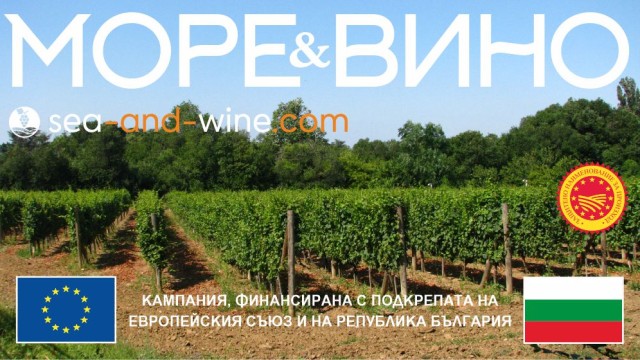BLACK SEA REGION WINES WITH A PROTECTED DESIGNATION OF ORIGIN (PDO)
The climate in the Black Sea region is moderately continental, but strongly influenced by the close proximity of the Black Sea, which softens it to a considerable extent. The region is characterized by dry and moderately warm summers with well-defined breeze circulation during most of the season. Autumn is long and warm. The total temperature sum for the period with average daily temperatures above 10 ºC (April-October) is from 3500 to 3750 ºC. The average daily temperature of the warmest month is 21.5 to 23.0 ºC. The average annual amount of precipitation is from 450 to 650 mm. The soil types are: gray forest soils medium sandy-clay or heavy sandy-clay, dark gray forest soils sandy or heavy-sandy clay, carbonate chernozems, light to heavy sandy-clay and alluvial- and deluvial-meadow soils. The climatic features of the region, combined with the typical hilly nature of the relief, the favorable soil conditions and the limitations imposed by the human factor, predetermine the character of the wines produced.
White wines have pronounced aromas of citrus and southern fruits and a fresh, balanced fruit taste.
The red wines have fruity aromas in which pepper, spices, herbs and resinous tones intertwine, the taste is fresh fruity and juicy.
What is necessary for a wine to bear the mark of PDO "Black Sea Region"?
The wine must be produced according to the traditional technology for the production of white and red wines, allowing aging in oak barrels for the varieties suitable for aging. It can be indicated by the following traditional names indicating the method of production, aging and its quality: "New", "Premium oak" or "First loading in a barrel", "Reserve", "Special reserve", "Special selection", " Collection", "Rosenthaler".
Wine with PDO "Chernomorsi region" must for white wines, rosé and wines of the Pamid variety - the alcohol content must be at least 10.5 vol. %, and for red wines - a minimum of 11.5 vol. %. There are also requirements for sugars, acidity, sulfur dioxide and sugar-free extract, which are precisely described in the legislative documents.
They need to have clarity, allowing for a slight sedimentation of coloring matter resulting from prolonged aging in bottles.
The borders of the region are also precisely described so that a wine can be with the PDO "Black Sea Region"
The maximum yield of grapes admissible for wine production with PDO "Chernomorsi region" is 9000 kg/ha.
The volume of each batch of wine produced cannot exceed 150,000 l for wines with a guaranteed designation of origin and 60,000 l for wines with a guaranteed and controlled designation of origin.
The grape varieties allowed for the production of wine with the PDO "Chernomorsi Region" are: for white wines: Rkatsiteli, Chardonnay, Muscat Otonel, Dimyat, Traminer, Sauvignon Blanc, Misquet Red, June Blanc, German Riesling, Misquet Vratchanski, Misquet Varna, Tamyanka , Silvaner; for red wines and rosé: Cabernet Sauvignon, Cabernet Franc, Merlot, Syrah, Pinot Noir, Gamay Noir, Pamid.
The "Sea and Wine" project aims to raise awareness about the benefits of PDO and PGI registration, thereby increasing the competitiveness of wines from the Black Sea region.

